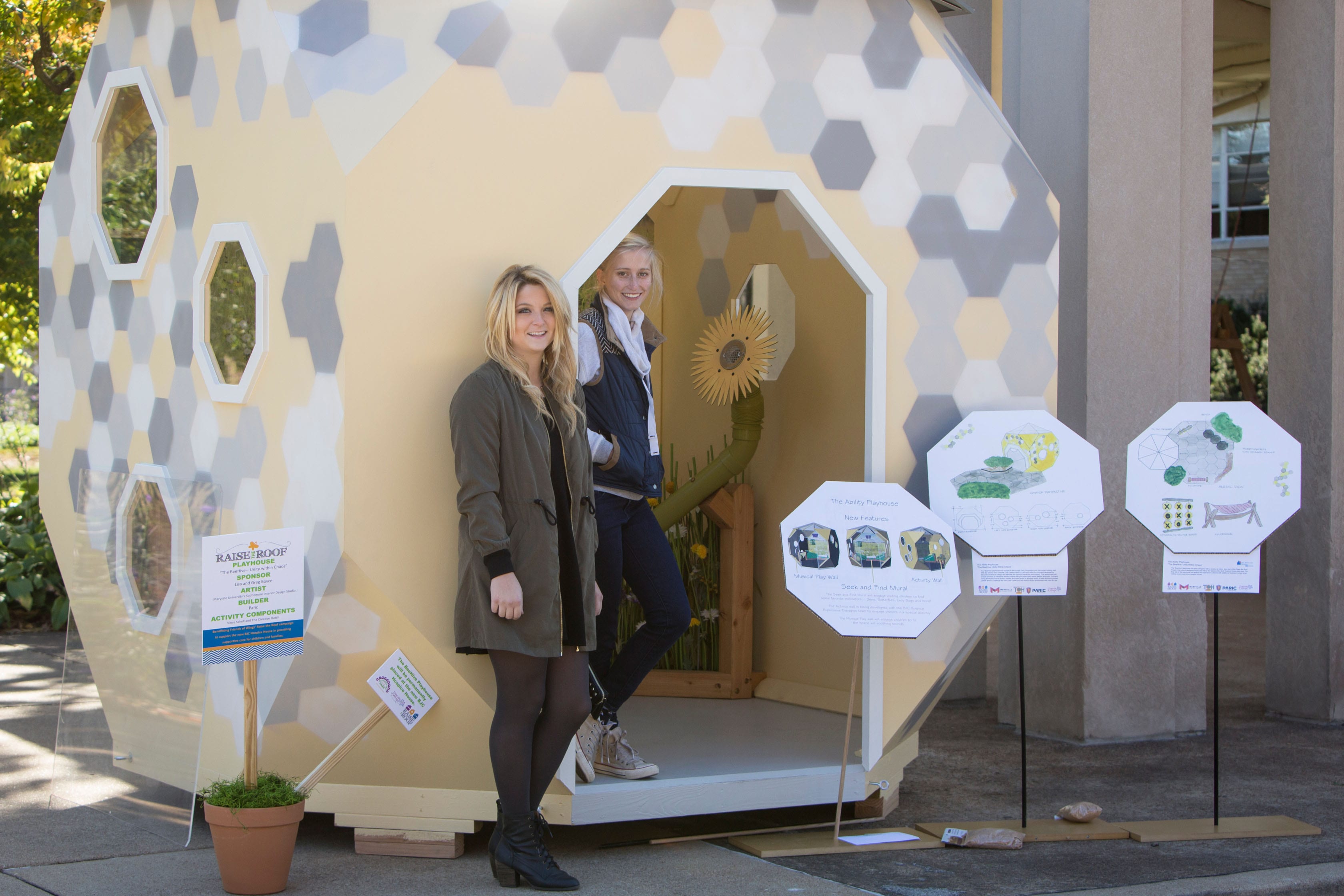Reading time: 4 minutes
Watch children play for a while and they begin to remind you of bees as they flit from activity to activity, sometimes alone and sometimes in a swarm, buzzing with energy. Such was the inspiration for a playhouse designed by Traci Stevener and Katie Stroetzel, Maryville Art and Design majors.
The playhouse is one of about 25 selected to be built as part of Raise the Roof, a fundraiser held last fall to benefit the future BJC Hospice House, which will serve children and their families facing a life-limiting illness. The student-designed structure, called the Beehive | Ability House, will become the centerpiece of the BJC Hospice House play area.
Darlene Davison, director of the interior design program and associate professor, required her students to participate in the competition. “I thought it would be a great project for my sophomore design studio, especially since the spring semester focus is designing for disability.”
Several student teams developed designs for an 8’ x 8’ x 10’ playhouse, which needed to accommodate a wheelchair and provide fun, interactive elements for children. After presenting their designs to the Raise the Roof judges, Stevener and Stroetzel learned that their beehive-inspired playhouse would be built and installed at the Hospice House.
“Working on this project helped me realize I love what I do, and I chose the right major.”
“As soon as we found out our house was selected, we had to create construction documents, and neither of us had done that before,” says Stevener. “We designed all these fun ideas that we now had to make a reality in hardline drawings. It was a struggle, but Darlene guided us through the process.”
Design is much more than creating something that looks appealing. Many technical issues must also be taken into account: the width of a door to accommodate a wheelchair; enough windows to allow light inside but not so many that the playhouse becomes a hothouse; standard building codes; and guidelines from the Americans with Disabilities Act (ADA).
“The biggest challenge for us was designing the playhouse so it would be accessible for everyone and be a place where kids would actually have fun,” says Stroetzel. “We researched disability-accessible play equipment and also general activities that kids enjoy.”
“We found that kids like to explore, touch everything and use their imaginations, so there are activities mounted to the walls at different heights for kids of various ages to discover,” says Stevener.
Inclusive design elements are also featured on the exterior of the playhouse. The structure will be set on honeycomb-shaped pavers to create a patio where interactive displays, like tic-tac-toe and a xylophone, will entertain kids awaiting their turn to explore inside the house. Benches will provide space for parents to relax while their children play.
Throughout the process, Davison invited professionals to critique the students’ work, giving her students real-world experience and relevant expertise. “Darlene’s feedback, and that of the experts she brought in, was invaluable for improving our design,” says Stroetzel.
Paric – the company building Maryville’s new residence hall – donated their time and materials to construct the playhouse. Vince Schell and his company, The Creative Hatch, built the interactive elements inside the playhouse.
Because the design students were off campus while the playhouse was under construction during summer months, Davison fielded questions from Paric and Schell. “I’m thrilled to have contributed to the Hospice House. It’s very important for my students to see first-hand the impact their designs and talents can have in the community,” she says.
“Working on this project helped me realize I love what I do, and I chose the right major,” says Stevener. “It was great to see our design become reality to help kids.”
“As students, we don’t usually get to see our projects all the way through from design to finished product,” says Stroetzel. “This has been a unique experience in our learning process. It feels really good that kids will benefit from our playhouse, and that it may make their lives a little better.”
 Beehive.H
Beehive.H